Okay, confession time. I have lots of experience with wilting peace lilies (Spathiphyllum spp.).
It’s not because mine are sick or pest-ridden, it’s because I use my ‘Domino’ peace lily as an alarm to warn me it’s time to water my other houseplants.
Once those gorgeous wrinkled, variegated leaves start drooping, I know it’s time to break out my watering can.
I don’t necessarily recommend this method of houseplant care, but it has worked for me for years because a lack of water is a common cause of wilting peace lilies.
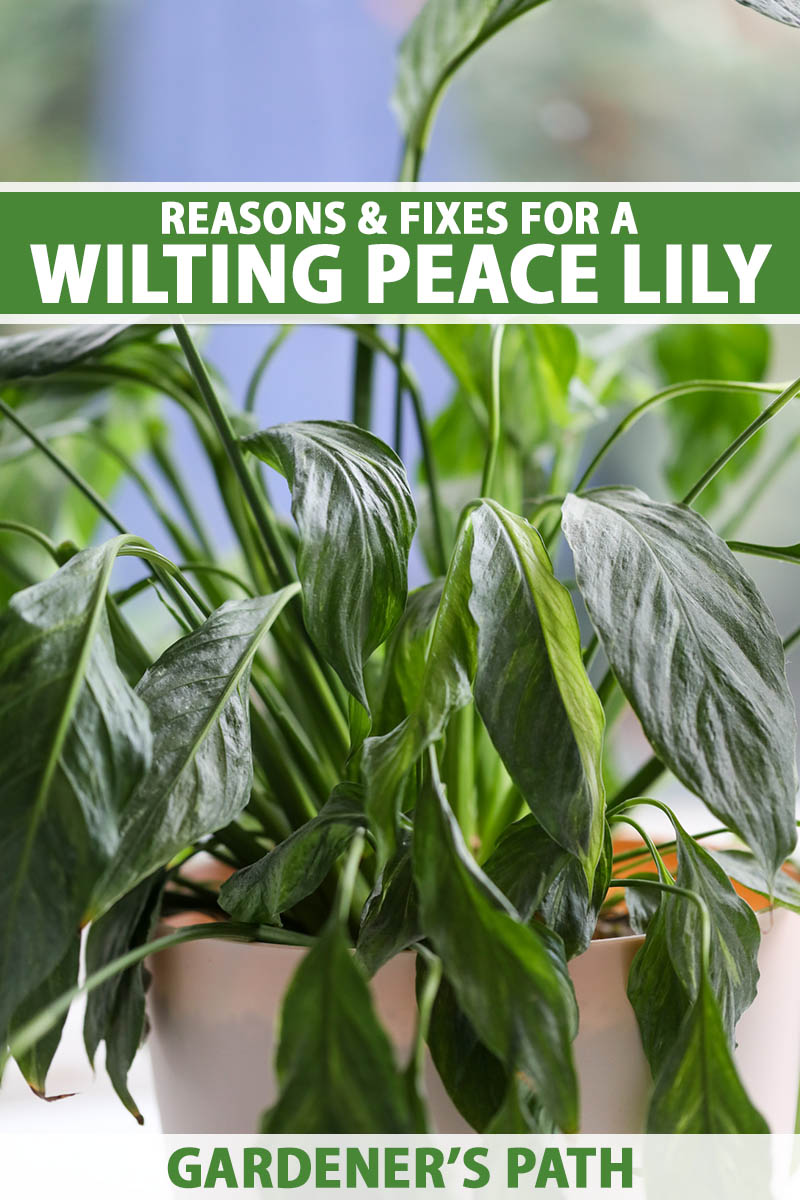
We link to vendors to help you find relevant products. If you buy from one of our links, we may earn a commission.
They consistently start drooping when the soil is dry. After watering, the plants bounce right back, and I know I’m not overwatering, which is a bad habit of mine.
Underwatering isn’t the only reason a peace lily may start to droop. There are several common causes that can turn your perky little plant into a sad, droopy mess.
Here are the seven top reasons we are going to cover:
Causes of Wilting Peace Lilies
All of the causes on this list can usually be avoided by giving the plant the appropriate care.
Visit our guide to growing Spathiphyllum to review the details on watering, light exposure, temperature preference, and other care requirements.
1. Cold Temperatures
Unless you keep your peace lily outside part of the year, you probably won’t run into this cause too often.
The exception is if you have single-pane windows and you live in a region with frigid winters. It can become cold enough to stress or stun your peace lily if you keep it next to the window.
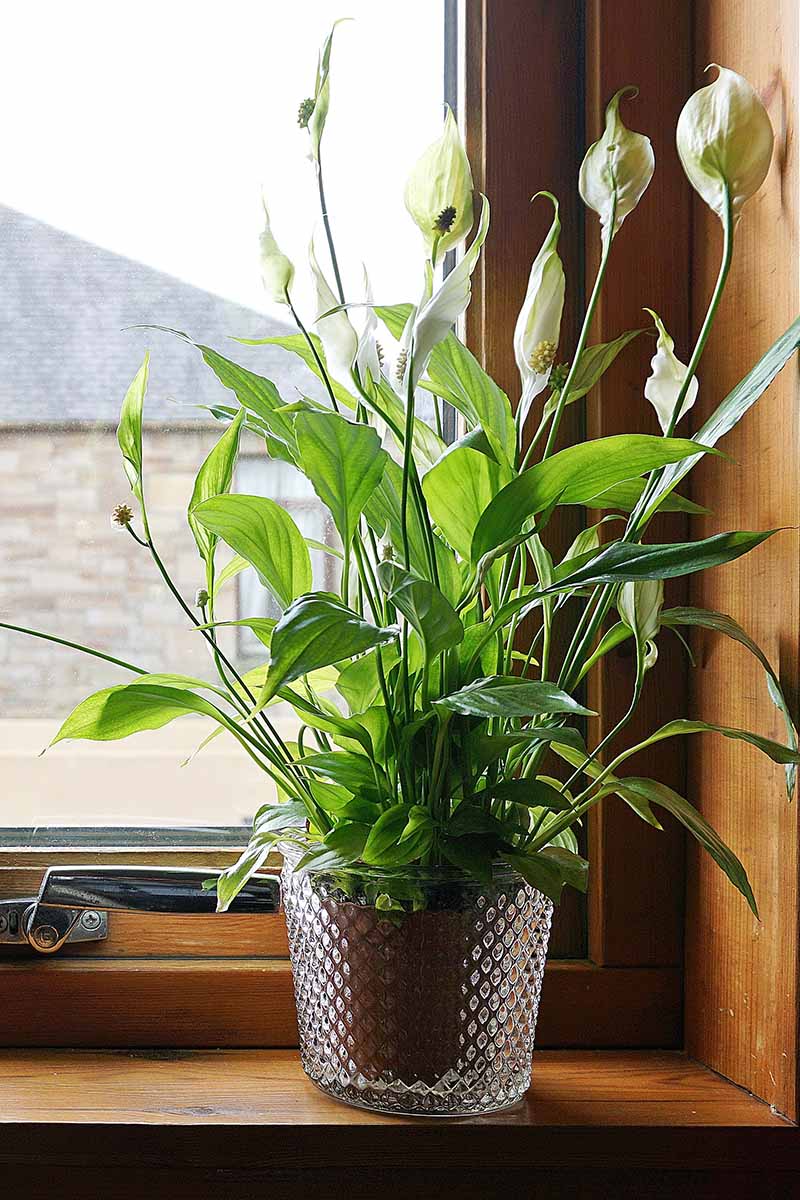
Temperatures below 50°F should be avoided, but that doesn’t mean if your house is a toasty 70°F that your plant is safe.
If it’s 20°F outside, and you have a single-pane window, the leaves closest to the glass could be exposed to temperatures well below 50°F.
Just be mindful of plants situated near windows or exterior doors. They could be much colder than you realize.
2. Disease
There are only a few diseases that you need to watch for on peace lilies, and of these, root rot is the disease that causes wilting leaves.
There are two kinds of root rot: Cylindrocladium (caused by Cylindrocladium spathiphylli) and Pythium (caused by Pythium spp.) root rot.
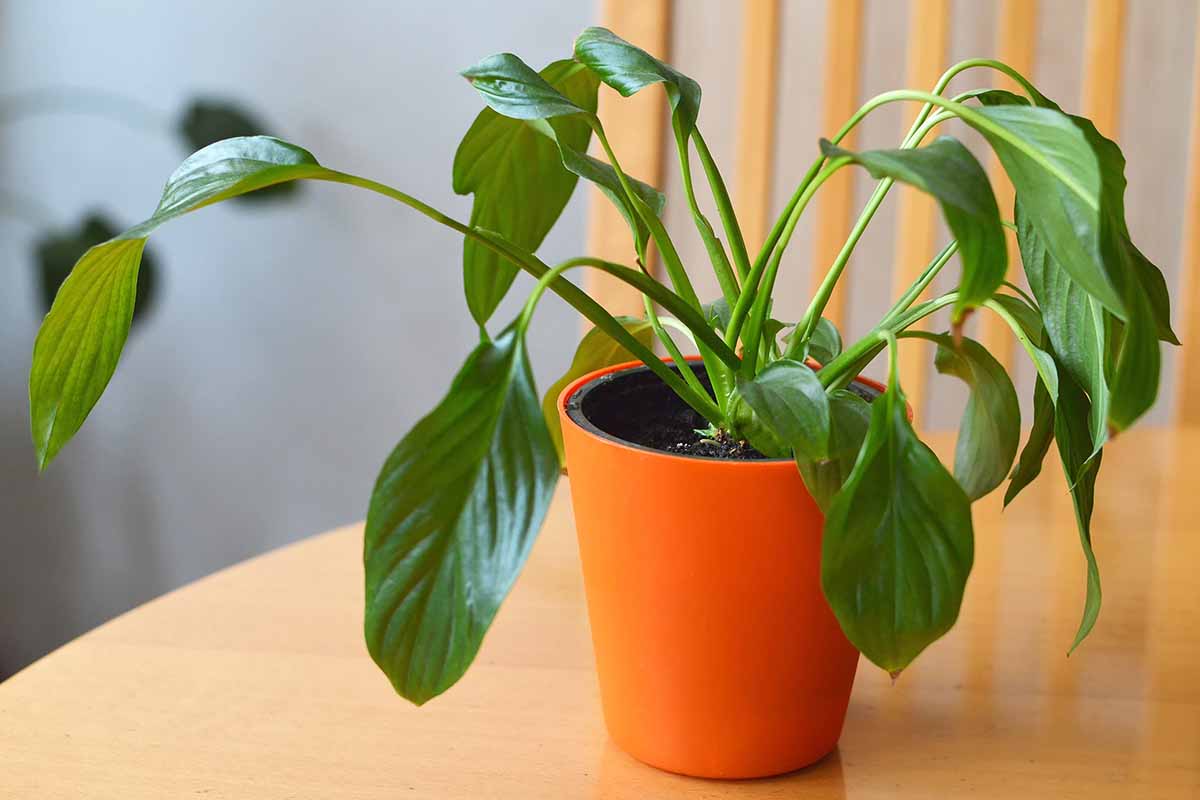
Both cause wilting and yellowing foliage, and if you were to unpot the plant, you’d see black, mushy, dying roots.
Root rot is generally caused by overwatering or poorly draining soil, and both can be rectified by repotting in fresh soil and treating with a fungicide.
To learn more, visit our guide to peace lily diseases.
3. Not Enough Water
As we mentioned before, a lack of water is a common cause of wilting. In fact, I’d venture a guess that it’s one of the most common reasons.
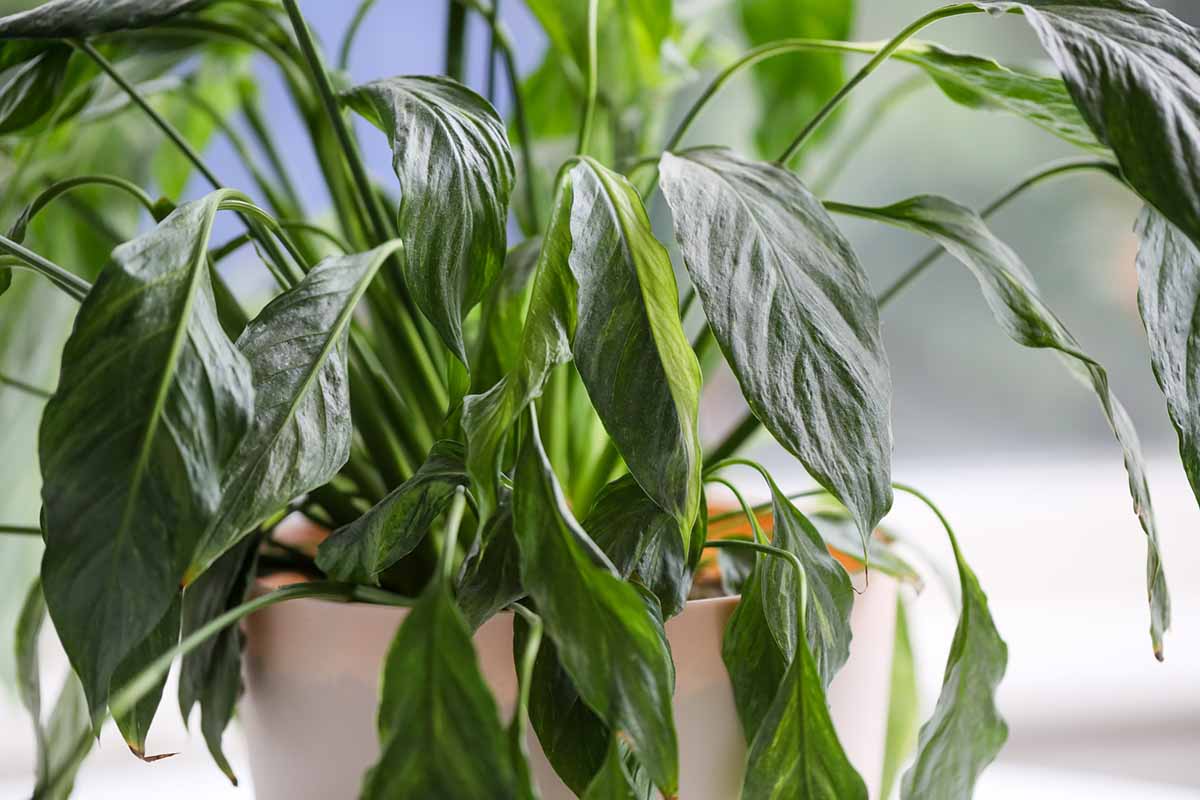
Thankfully, if you add water your plant will perk back up and will recover with no damage.
Mine doesn’t even have brown leaf tips from repeatedly being allowed to dry out. But you need to catch it just as it’s drying out.
If you wait too long, as the roots really dehydrate, you will start to see brown leaf tips.
Spathiphyllum species like the soil to be moist but never wet. Next time you wring out a sponge really well, touch it and become familiar with the texture.
That’s the moisture level that you’re aiming for in the soil.
Visit our guide to watering peace lilies for more information.
4. Overwatering
We’ve said that not enough water causes wilting, and now we’re telling you that too much can cause the same issue? It’s true, though.
I’ve known several people who noticed their plant was drooping, so they added more and more water. Before they knew it, root rot had set in.
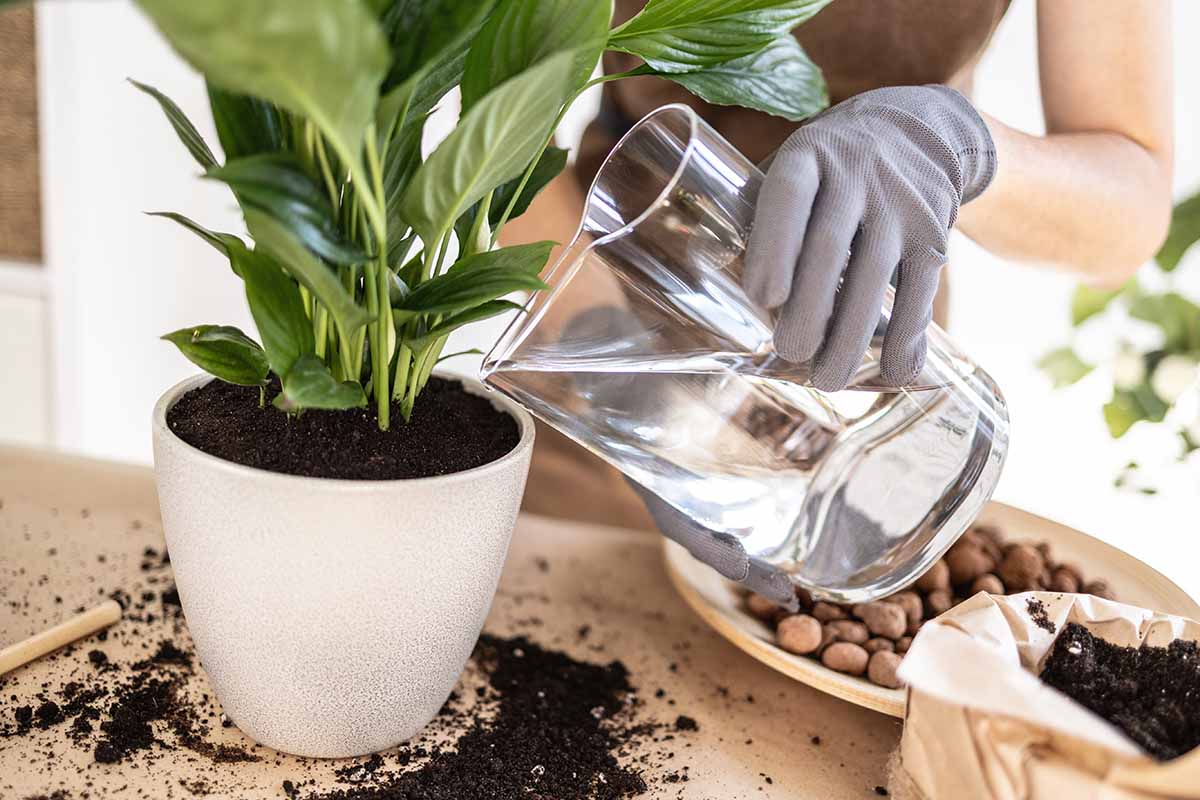
If your plant is wilting, don’t assume it needs more water. Go and stick your finger in the soil as deep as you can. The soil can be moist, but it shouldn’t be wet or soggy.
It helps to feel as deep as you can because sometimes the soil will become waterlogged deeper down in the pot but will feel appropriately moist near the top.
If you feel wetness at the bottom, check out the drainage holes. Are they clogged? If you can, stick a chopstick or something in there an inch or so and wiggle it around to loosen up the soil.
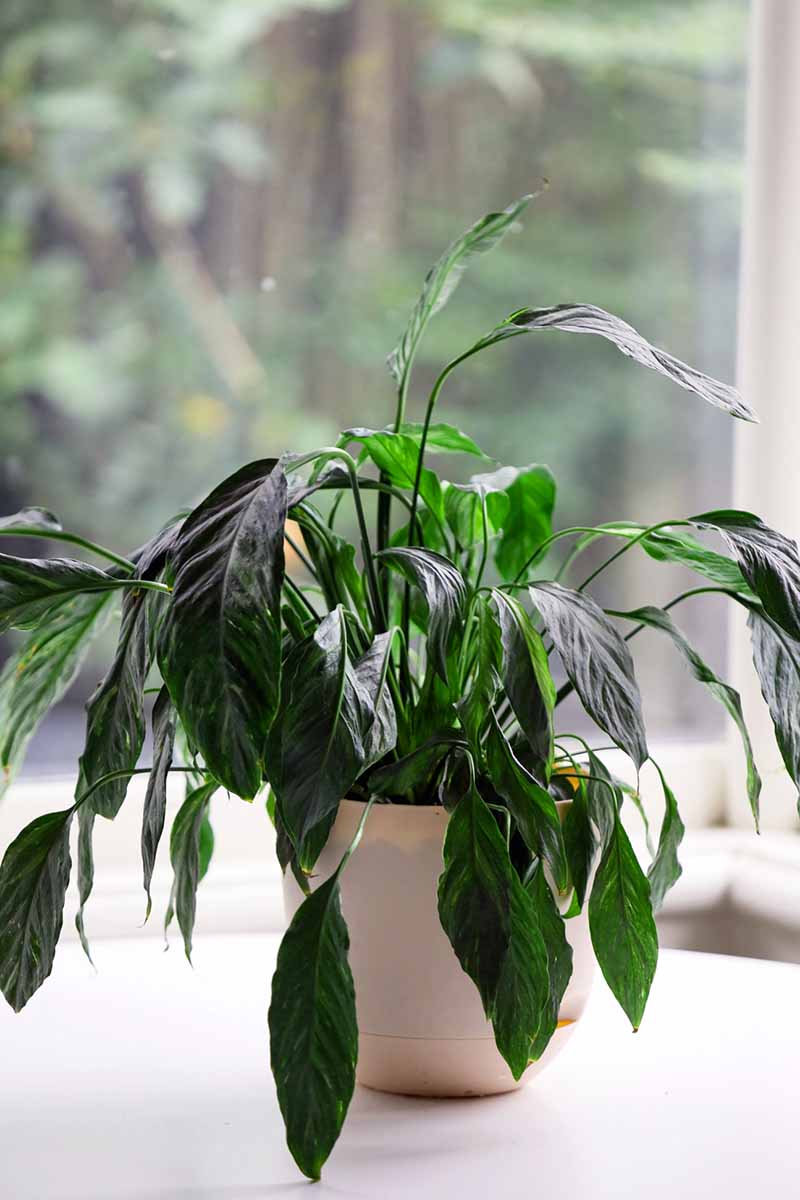
Do you have a layer of rocks in the bottom of your pot? Get it out of there. This is a gardening myth that won’t die.
A layer of rocks or broken crockery won’t improve drainage. It actually raises the level at which water pools, which means that the moisture is sitting closer to the roots than it would otherwise.
Finally, be mindful not to water until the top inch of the soil has dried out. The rest of the soil should feel moist but not wet.
If you can ball up a little bit of soil in your hand, and it stays together rather than crumbling apart, it’s too wet.
5. Pests
Part of what makes them so easy to raise is that Spathiphyllum species aren’t particularly bothered by pests. But just because something is uncommon doesn’t mean that it’s impossible.
A peace lily that’s infested by mealybugs, scale, or spider mites might wilt. These pests all suck the sap of the stems and leaves, causing yellow stippling and leaf wilting.
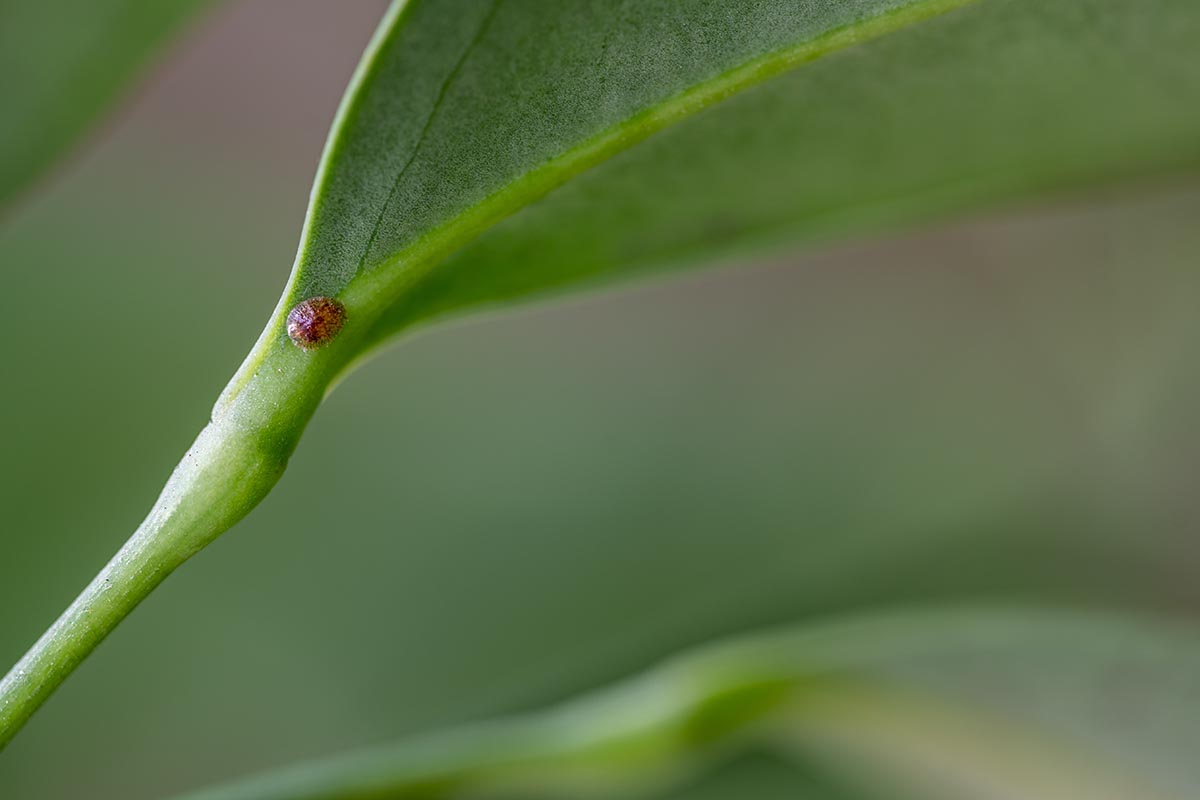
If you examine your plant closely, you’ll see the insects themselves. Aphids are tiny oval pests in green, yellow, or brown.
Scale look like flat bumps underneath the leaves or along the stems near leaf nodes. Mealybugs might be mistaken for a disease. They’re gray or white and fuzzy, kind of like fungus.
Once you address the infestation, the leaves should perk back up. But if they are discolored, they won’t return to their original hue, so you should snip them off.
6. Rootbound Plant
This goes hand in hand with underwatering. If your peace lily has outgrown its current container and the roots are all bound up, the plant will rapidly dry out.
Typically, you’ll know when your houseplant becomes rootbound because you will see roots growing out of the drainage holes or up out of the surface of the soil.
But even if you don’t see this happening, dig down a little and check the roots if the foliage is drooping and you’ve determined it isn’t a watering issue. The roots will feel tight and packed rather than loose, with soil in between.

If the plant is rootbound, you’ll either need to divide it or move it into a larger container.
Either way, remove the plant from the container, brush away the soil, and loosen up the roots. Cut away any roots that are black, broken, or mushy.
If you want to divide it, cut through the roots and include at least a few stems. Pot up divisions in new containers and replace the original section in the first container.
To upgrade to a larger container, after loosening the roots, place the plant in the new pot and fill in around the roots with fresh potting soil.
7. Too Much Light
Peace lilies don’t like a lot of direct sunlight. Maybe a little bit in the early morning, but if you offer them direct light in the afternoon, you might find your plant drooping.
Sometimes, you can remedy this by adding water to the soil, but a better idea is to move the houseplant to a darker location.

When this is the cause of wilting, you’ll probably also see some browning or yellowing of the leaves.
Remember that these plants do best with bright, indirect light. The only direct light they can tolerate is early morning light, which is less harsh than afternoon light.
Perk Up!
Peace lilies are what I consider expressive plants. They make it perfectly clear when something is wrong.
I think that’s a good thing, because you can work on fixing it before the problem becomes fatal. Fix the cause, and you’ll find your peace lilies perking right back up.
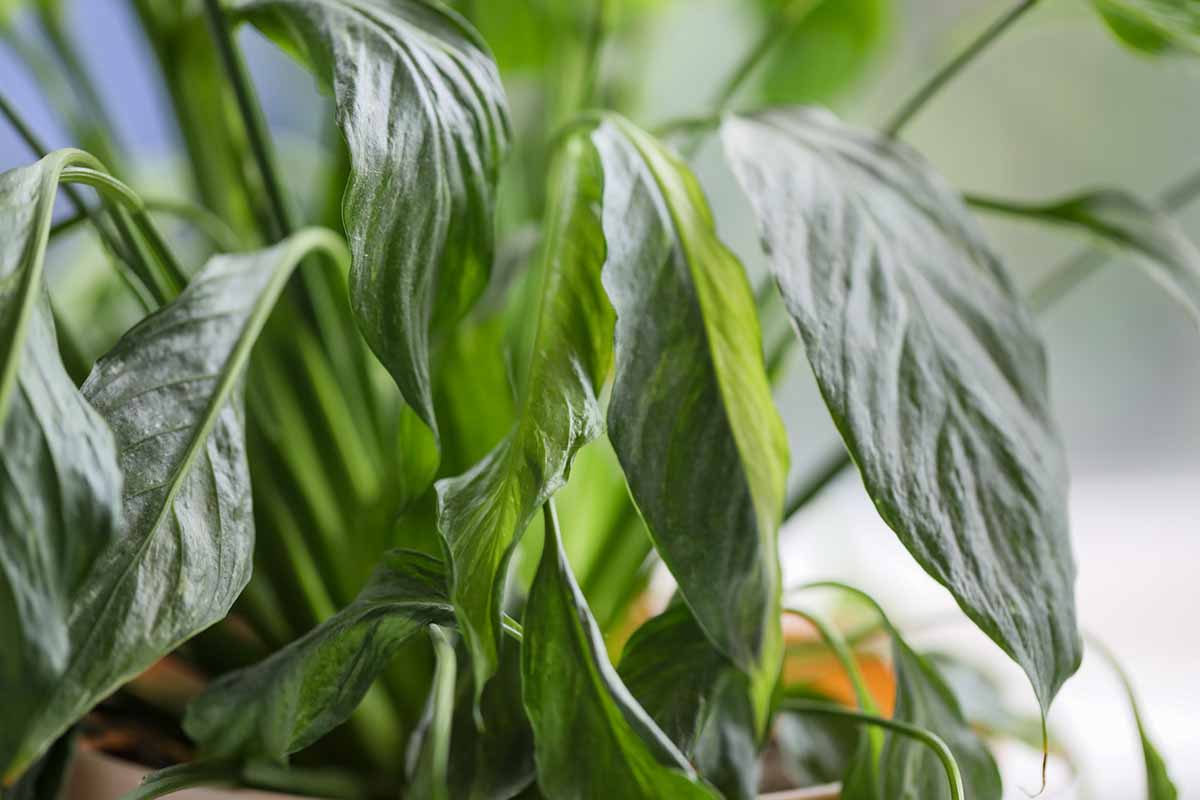
What’s going on with your plant? Hopefully, this guide helped you solve the problem, but if you’re still having trouble, let us know in the comments and we’ll do our best to help!
Now that your plant is feeling good again (we hope!), we have lots of other information to help you get to know Spathiphyllum better. Check out these guides next:



I hope you can help me with my peace Lily I received 8 months ago. It is growing but all the new growth and flowers are much smaller then the older leaves. The flowers get buried in the center and only grow to about 4 in in height. Is this normal? I am attaching photos hopefully you can see what I mean.
Hi Joanna, this isn’t unusual when a plant is put in a new place. Give it some time to become established in the new environment and it should send up normal growth.
Hi, I recently reported my peace lily due to constantly drooping leaves. I removed some roots that weren’t looking healthy. Rinsed the roots good and sprayed them with a peroxide and water mix. Put it in a new pot with new soil. Within a couple-3 days, it again is wilting all the time. Some of the leaves have brown tips. I’ve found no pests, and tried all the suggested things. I’m about ready to give up.
I’m sorry to hear that, Debbie. When you sprayed the roots, what ratio of peroxide to water did you use? It’s possible that the peroxide damaged the existing roots. You could give it a bit more time. The plant could be stressed by the root trim and repotting and might just need some time to recover.
Our office has an enormous peace lily that has been here 10 plus years. It had outgrown the pot, so we’ve split it into two separate pots and ever since (approx 2 months) now it’s extremely wilted, to the point that the stems are bent. However, the leaves are all still a very vibrant green. One co-worker wants to just throw them both out, but I’m hesitant because of the greenness of the plant! I’m being stubborn about it because I think it’s still just pouting about the shock of being separated. Tell me if there is hope or if… Read more »
Hi Susan, if all things have remained the same, meaning the light and soil moisture haven’t changed from when the two parts were growing together, then I would say it’s likely just shock.
However, sometimes people offer up extra water after diving or transplanting a plant and that can actually lead to wilting. So if the plants have received extra water, definitely reduce the water and let them recover. I’d recommend sticking a finger in the soil. It should feel like a well-wrung-out sponge or drier. If it feels soggy, it’s most likely an overwatering problem.